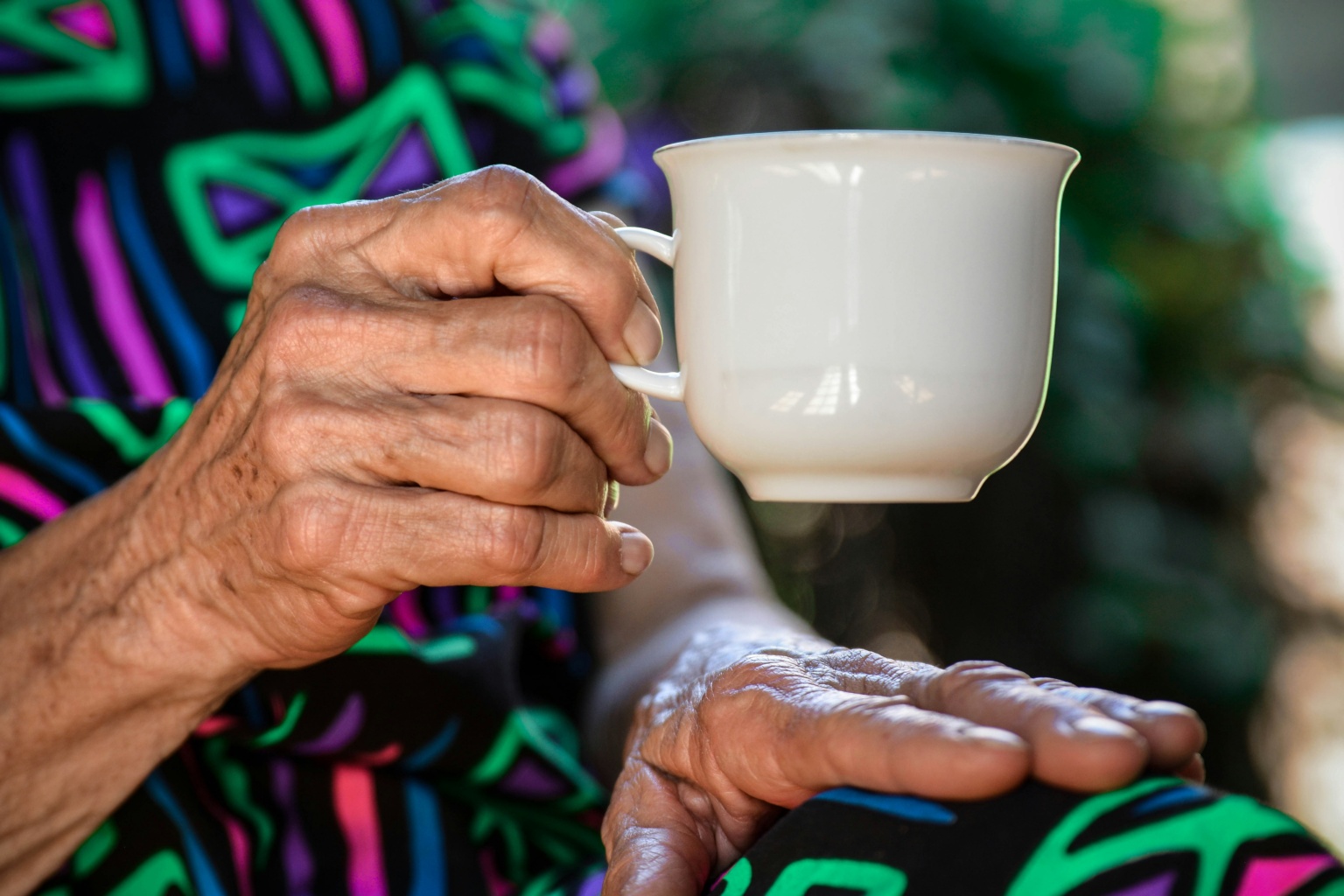Finding the Perfect Respite Care Provider: Your Essential Guide for Australian Families
Choosing a respite care provider who is both caring and dependable means that both carers and those receiving care can truly flourish – emotionally, physically, and socially. With one in six Australians now over the age of 65, and a growing need for support through My Aged Care and the NDIS, finding the right respite service is key to preventing carer exhaustion, making the most of your funding, and enhancing everyone’s quality of life.
In this guide, you’ll discover:
- What respite care involves and its significant advantages
- How to pinpoint your specific support requirements
- The full range of respite care options available across Australia
- How to access funding through My Aged Care, NDIS, and Carer Gateway
- The crucial factors to consider when assessing providers
- The real-world benefits for both carers and care recipients
- Simple steps to arrange CURA’s personalised respite care
- Clear answers to your most pressing questions about respite care
By the time you finish reading, you’ll have a clear path forward to select a respite care provider that perfectly matches your cultural, medical, and lifestyle needs, all with expert guidance from CURA.
What Exactly Is Respite Care, and Why Is Picking the Right Provider So Important?
Respite care offers a much-needed break for family carers by providing temporary support for the person they care for. This service ensures that daily routines and medical needs are met, while giving carers the opportunity to rest, attend appointments, or simply recharge. Selecting a skilled and trustworthy provider is essential for ensuring safety, creating personalised care plans, and making sure transitions between home-based and centre-based care are smooth and stress-free. Respite care services are available through various locations.
The Wonderful Benefits of Respite Care
Respite care provides a vital temporary break for family carers, allowing them precious time to rest, attend appointments, or simply recharge. This service ensures the care recipient’s daily routines and medical needs are consistently met, all while significantly reducing carer stress and helping to prevent burnout.
This source perfectly captures the core advantages of respite care for everyone involved, aligning beautifully with our introduction to the topic.
What Does Respite Care Mean for Carers and Those Receiving Care?
For care recipients, respite care means a qualified professional steps in to manage personal care, medication, and provide companionship, offering family carers a scheduled and well-deserved break. This arrangement ensures continuity in the care recipient’s daily life and significantly eases the burden on the carer. Understanding these roles clearly is the first step towards finding a provider who truly respects individual preferences and established routines.
How Does Respite Care Act as a Shield Against Caregiver Burnout?
Respite care acts as a crucial preventative measure against burnout by providing carers with regular breaks. These breaks help to reduce chronic stress, lift spirits, and build mental resilience. Consistent relief prevents exhaustion, lowers the risk of developing depression, and strengthens a carer’s ability to continue providing care long-term. Recognising this protective benefit encourages carers to schedule respite *before* stress levels become overwhelming.
What Are the Key Advantages of Respite Care for Families and Individuals?
Before you start looking at providers, take a moment to consider these significant benefits of respite care:
- Improved emotional wellbeing for carers thanks to regular downtime
- Enhanced social connections and skill-building opportunities for care recipients
- A reduced chance of emergency hospitalisations due to professional monitoring
- Greater confidence in the long-term sustainability of care arrangements
- Precious opportunities for families to focus on strengthening relationships, not just managing routines
These advantages clearly show why choosing the right provider has a direct and positive impact on the quality and consistency of care received.
How Do You Figure Out Your Respite Care Needs?
Carefully assessing your respite needs ensures that the services you choose align perfectly with health requirements, cultural considerations, and your preferred schedule. A thorough evaluation prevents mismatches between the level of support needed and your personal circumstances.
Who Usually Benefits from Respite Care in Australia?
Respite care is commonly a lifeline for:
- Older Australians managing frailty or ongoing health conditions
- Individuals living with physical or intellectual disabilities
- Family members who are the primary carers for individuals with complex needs
- Individuals recovering from surgery or acute health episodes
Identifying which category you fall into will help you prioritize providers with the specific skills and credentials you need.
What Levels and Types of Care Might Be Necessary?
Respite providers can offer a variety of care levels, including: respite care.
- Personal Care: Assistance with daily tasks like hygiene, dressing, and meal preparation
- Medical Support: Help with medication, wound care, and monitoring vital signs
- Social Engagement: Companionship, outings, and activities designed to stimulate the mind
Ensuring the care level matches your requirements guarantees that the provider’s qualifications meet your expectations.
How Do the Length and Frequency of Respite Affect Your Decision?
Respite care can be booked in various lengths and frequencies: Respite care services are available for those in need.
- Short Visits (2–4 hours): Perfect for regular weekly breaks
- Overnight Stays (1–3 nights): Provides longer periods of rest in a comfortable setting
- Emergency Respite (as needed): Available through Carer Gateway for unexpected crises
- Ongoing Weekly Sessions: Offers a structured routine to consistently prevent burnout
Matching the duration and frequency to your lifestyle ensures you receive the right amount of support without over or under-servicing, fostering predictable and reliable care patterns.
What Are the Different Kinds of Respite Care Available in Australia?
Understanding the various service models available will help you compare providers and choose the best environment for the person receiving care.
What Is In-Home Respite Care, and Who Is It Best Suited For?
In-home respite care involves qualified support workers coming directly to the client’s home to provide personalised assistance. This option is ideal for individuals who feel most comfortable in their familiar surroundings, require minimal travel, or have very specific daily routines. It’s also a wonderful choice for culturally and linguistically diverse families who prefer the comfort and familiarity of their own home.
How Does Centre-Based Day Respite Help with Socialisation?
Centre-based day respite offers a structured program of group activities, encouraging social interaction, physical activity, and creative therapies. These centres often provide transport and may offer culturally specific programs, making them an excellent choice for individuals who enjoy community settings and connecting with peers.
What Are Cottage and Overnight Respite Options?
Cottage respite provides short stays in a welcoming, home-like environment, typically catering to small groups. This model combines the comfort of a home with round-the-clock supervision. It’s a great option for clients who would benefit from a change of scenery while carers enjoy an extended period of relief.
When Is Residential Respite the Right Choice?
Residential respite involves temporary accommodation within an aged care facility. It offers comprehensive nursing care, allied health services, and a secure environment. Opt for residential stays when intensive medical monitoring or rehabilitation is required.
Navigating Respite Care Funding: Understanding My Aged Care and NDIS
Securing the appropriate funding means you can access more care days, reduce your out-of-pocket expenses, and ensure the level of service aligns with your budget.
What Is My Aged Care Respite Funding, and How Do You Apply?
My Aged Care can fund up to 63 days of residential respite care each financial year and also subsidises in-home or centre-based care through Home Care Packages.
Residential Respite Subsidy Explained
The Australian Government offers subsidies to residential aged care providers to help cover the costs of respite care. These subsidies assist with accommodation expenses for respite residents, and providers are required to allocate a portion of their residential aged care places for respite services.
This source offers valuable insights into the financial aspects of residential respite care, which is directly relevant to the funding section of our article.
The application process is straightforward:
| Step | Action | Purpose |
|---|---|---|
| 1 | Register online or by phone | Opens the door to accessing services |
| 2 | Complete an ACAT assessment | Determines your eligibility and the appropriate level of care |
| 3 | Receive your care plan and package approval | Outlines the funded hours and days available |
| 4 | Choose an approved provider | Matches the services to your specific care plan |
| 5 | Arrange your respite sessions | Ensures you stay within your funded limits |
This clear process empowers carers to plan their respite care effectively within their allocated entitlements.
How Does NDIS Short-Term Accommodation (STA) Work for Respite?
NDIS STA provides support for participants with a disability to access up to 28 days of funded accommodation each year.
NDIS and Respite Care: A Closer Look
The National Disability Insurance Scheme (NDIS) provides funding for Short Term Accommodation (STA), which is essentially respite care. STA offers temporary accommodation and support for individuals with disabilities, giving their carers a well-deserved break and fostering greater independence for the participant.
This source clearly explains how NDIS funding supports respite care, which is crucial information for understanding the funding pathways we discuss in this article.
Including STA in your plan involves these steps:
- Plan Review: The participant or their nominee requests STA during their next plan review.
- Budget Allocation: Funds for STA are specifically set aside within the Core supports budget.
- Provider Engagement: Select a registered NDIS respite provider.
- Booking and Usage: Keep track of the days used to ensure you don’t exceed your budget.
Being aware of funding cycles and the plan review process ensures smooth access to STA.
What Support Does Carer Gateway Offer for Respite?
Carer Gateway offers invaluable support, including free counselling, peer support groups, and referrals for emergency respite. Carers can access: respite care.
Carer Gateway Support Services
Carer Gateway provides a range of essential support services for carers, such as counselling, peer support networks, and referrals for emergency respite care. These services are designed to offer practical information, advice, and support to unpaid carers across Australia.
This source details the services offered by Carer Gateway, a vital funding pathway we highlight in this article.
- Up to five counselling sessions each year
- Online workshops to build skills and access hardship grants
- Rapid deployment of care workers for urgent crisis situations
Utilising Carer Gateway in conjunction with government funding provides comprehensive and holistic support.
What Are the Typical Costs and Fees Associated with Respite Care?
The cost of respite care can vary depending on the type of service and your location. Here’s a general breakdown of common fees:
| Service Type | Approximate Daily Fee | Potential Additional Charges |
|---|---|---|
| In-Home Respite | $60–$90 | Travel costs, extra care hours |
| Centre-Based Day Respite | $50–$80 | Transport fees |
| Cottage/Overnight Respite | $150–$250 | Meals, activity fees |
| Residential Respite Stay | $200–$300 | Means-tested daily care fee |
Understanding these fee structures helps prevent unexpected expenses and guides your budget planning.
What Key Factors Should You Consider When Choosing a Respite Care Provider?
Carefully assessing a provider’s credentials is your assurance of safety, quality, and a good cultural fit.
Why Are Accreditation and Quality Standards So Crucial?
Accreditation by the Aged Care Quality and Safety Commission confirms that a provider adheres to national standards for care delivery, risk management, and staff training. Accredited providers are regularly audited, ensuring a consistent level of high-quality care.
Accreditation for Aged Care Providers
Accreditation by the Aged Care Quality and Safety Commission ensures that aged care providers consistently meet the Aged Care Quality Standards. This rigorous process involves regular audits and assessments to guarantee the quality and safety of the care and services provided.
This source clearly explains why accreditation is so important, a key factor to consider when selecting a respite care provider, as we discuss in this article.
How Do Staff Qualifications Affect the Quality of Care?
Qualified care workers typically hold certificates in aged care or specialised clinical supports training. Higher qualifications often translate to better clinical monitoring, a deeper understanding of behavioural needs, and greater cultural competence.
What Role Do Personalised Care Plans Play in Respite Services?
Personalised care plans detail specific routines, medical requirements, and cultural preferences, ensuring that the support provided is truly tailored. A well-defined plan enhances communication between carers, families, and support workers, promoting continuity and mutual respect.
How Important Is Cultural and Linguistic Sensitivity for CALD Communities?
Providers who offer multilingual staff and culturally relevant activities enable non-English speakers to engage fully and meaningfully in respite care programs. Cultural sensitivity is vital for building trust and improving the emotional wellbeing of recipients from diverse backgrounds.
How Do Location and Accessibility Influence Your Choice?
Choosing a provider that is close to home minimises travel stress for everyone involved. Accessible facilities, equipped with features like ramps and hoists, and reliable transport services, ensure safe and easy entry and exit. Opting for a local provider can also enhance punctuality and foster a stronger sense of community connection.
Why Should You Always Check Reviews and Testimonials?
Genuine feedback from other families provides invaluable insights into a provider’s reliability, the attitudes of their staff, and the quality of their activities. Verified testimonials can significantly boost your confidence in a provider’s consistency and responsiveness.
What Are the Benefits of Respite Care for Both Carers and Care Recipients?
Respite care offers tangible improvements in wellbeing for everyone involved, thanks to structured breaks and engaging activities.
How Does Respite Care Help Prevent Caregiver Burnout?
Regular respite breaks effectively reduce ongoing stress levels and significantly improve carers’ mental health. They provide consistent opportunities for rest, dedicated time for self-care, and the chance to attend to personal commitments.
What Social and Developmental Benefits Do Care Recipients Gain?
Participation in social activities, skill-building programs, and community outings boosts recipients’ confidence, helps prevent feelings of isolation, and stimulates cognitive function through varied and engaging experiences.
How Do You Get Started with CURA’s Personalised Respite Care Services?
CURA’s expert team is here to help you arrange bespoke respite solutions that honour your cultural background, language needs, and personal preferences.
How Can You Arrange a Personalised Consultation with CURA?
Simply start by calling Cura’s friendly care advisors to discuss your unique situation. This initial conversation helps us understand your eligibility, cultural requirements, and care goals before we schedule an in-home or virtual consultation.
What Is the Assessment Process for Developing Your Care Plan?
During the assessment, a Cura care coordinator will visit your home to review medical needs, daily routines, and social interests. Together, you will co-design a care plan that clearly outlines the required support levels, preferred activities, and any specific staff language capabilities. aged care services
How Does Cura Tailor Respite Care to Your Individual Needs?
Cura Aged Care carefully matches you with support workers who have specialised training in areas like clinical care or multicultural care. Our services range from in-home visits to centre-based programs featuring culturally appropriate meals and language-specific activities. This flexibility ensures care recipients feel completely at ease, and carers gain invaluable peace of mind.
Your Most Common Questions About Choosing a Respite Care Provider, Answered
Australian carers often seek clear answers about service types, funding limits, and eligibility criteria to make informed decisions with confidence.
What Are the 3 Main Types of Respite Care Available?
Respite care in Australia generally falls into three main categories:
- In-Home Respite: Short visits from support workers within the client’s own home.
- Centre-Based Day Respite: Group activities and social engagement at community centres.
- Short-Term Accommodation (Cottage/Residential): Overnight or multi-day stays in a supported environment.
These categories cover a range of care intensities and settings, offering personalised relief options.
How Many Days of Respite Care Can You Access in Australia?
Under My Aged Care, eligible individuals can receive up to 63 days of residential respite care per financial year. NDIS participants are entitled to up to 28 days of STA annually. It may be possible to extend your total respite care days by combining different programs.
Who Is Eligible for Respite Care Funding?
Eligibility is determined by assessment outcomes:
- My Aged Care: Requires an ACAT assessment for individuals aged 65 and over.
- NDIS: Requires plan approval for participants with a disability.
- Carer Gateway: Available for carers experiencing urgent need for support.
Your assessment results will guide your funded care plan and service limits.
Is Respite Care Covered by the NDIS?
Yes, NDIS participants who have STA funding included in their plan can access short-term accommodation services, provided it aligns with their plan budgets and goals. Core funding can also support in-home care and community participation.
What Is the Difference Between Respite Care and Short-Term Accommodation (STA)?
Respite care is a broad term encompassing in-home, centre-based, and emergency support. STA, on the other hand, specifically refers to funded short-term residential stays under the NDIS or My Aged Care framework. STA typically includes overnight accommodation combined with personal and social care in the respite care.
Caring for a loved one can be incredibly demanding, but with the right respite care provider, you gain expert support, safeguard wellbeing, and preserve precious family connections. By following this guide – defining your needs, exploring the available services, navigating funding options, and carefully evaluating key criteria – you are well-equipped to choose a provider who prioritises safety, cultural respect, and personalised experiences. CURA is ready to help you arrange tailored respite solutions that enhance the quality of life for both carers and care recipients, ensuring every break is a positive step towards sustained wellbeing and lasting peace of mind.





